Text and photos by Anna Karina Johansen, JMMDS
What a spring! Finding myself trying to start my gardens—or, at the very least, mow my lawn—and being thwarted by rain, I decided to head for the hills. The rewards were many.
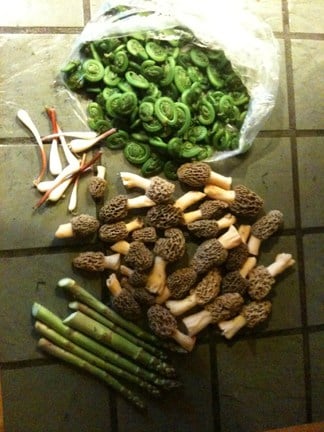 A day’s harvest: Allium tricoccum (ramps), Metteuccia struthiopteris (ostrich fern) fiddleheads, Morchella esculenta (common morels) and asparagus.
A day’s harvest: Allium tricoccum (ramps), Metteuccia struthiopteris (ostrich fern) fiddleheads, Morchella esculenta (common morels) and asparagus.
 Forest explorations put dinner on the table with a morel bounty that had many hauling them in by the shirt-load. A fellow forager once told me, “The secret to finding morels is not to look down, but to look up.” I confess, it’s a bit of both (which can often leave one feeling slightly nauseous), but the best place to start is in predominantly ash forests, especially those on southeast-facing slopes. This year, however, people have been finding them pretty much everywhere—under old apple trees, in old wood chips, even on the side of the road!
Forest explorations put dinner on the table with a morel bounty that had many hauling them in by the shirt-load. A fellow forager once told me, “The secret to finding morels is not to look down, but to look up.” I confess, it’s a bit of both (which can often leave one feeling slightly nauseous), but the best place to start is in predominantly ash forests, especially those on southeast-facing slopes. This year, however, people have been finding them pretty much everywhere—under old apple trees, in old wood chips, even on the side of the road!
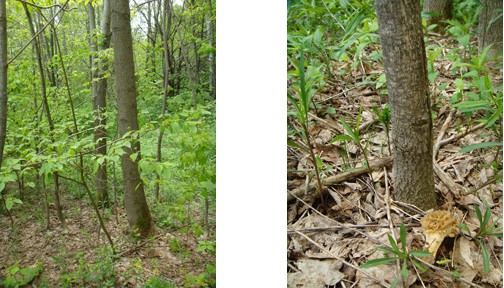 L: An ash tree. R: A morel at the base of a young ash.
L: An ash tree. R: A morel at the base of a young ash.
 Weighing in: the fresh and the dried side-by-side.
Weighing in: the fresh and the dried side-by-side.
The weather is also a factor, with the dry and then wet spells of this spring seeming to be the golden order of events. Make sure the pith is hollow (false morels are cottony), and consume only a small amount the first time, especially if you are drinking alcohol, as mild intoxication may occur. There are many ash trees in the woods, and not so many morels, so what’s the secret? A lot may have to do with giving up, because as soon as you do, your eyes focus and they just seem to appear, you step on them as you’re walking out of the woods or you find something else that you didn’t even know you were looking for.
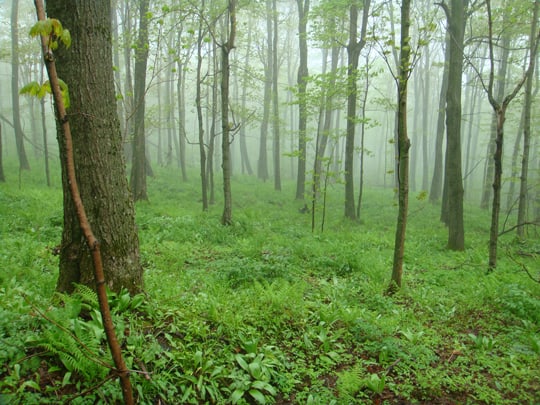 A ramp- and fern-covered forest floor on a foggy-morning-morel hunt gone astray.
A ramp- and fern-covered forest floor on a foggy-morning-morel hunt gone astray.
 Mitella diphylla (fairy cup), a favorite, holding court with Trillium erectum (wake-robin) and
Mitella diphylla (fairy cup), a favorite, holding court with Trillium erectum (wake-robin) and
ramps along a mossy marble outcropping.
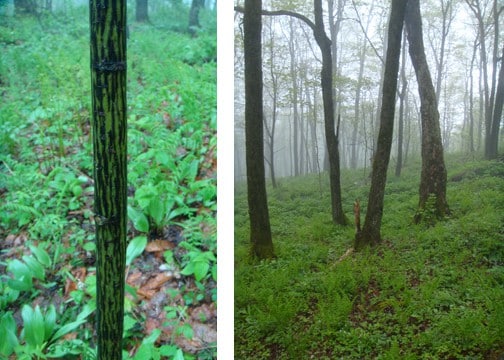 L: Acer pensylvanicum (striped maple). R: Sugar maple paradise.
L: Acer pensylvanicum (striped maple). R: Sugar maple paradise.
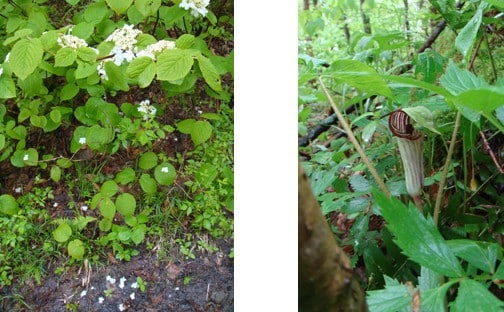 L: Viburnum lantanoides (hobblebush), nature’s lacecap hydrangea. R: Arisaemea triphyllum (Jack-in-the-pulpit).
L: Viburnum lantanoides (hobblebush), nature’s lacecap hydrangea. R: Arisaemea triphyllum (Jack-in-the-pulpit).
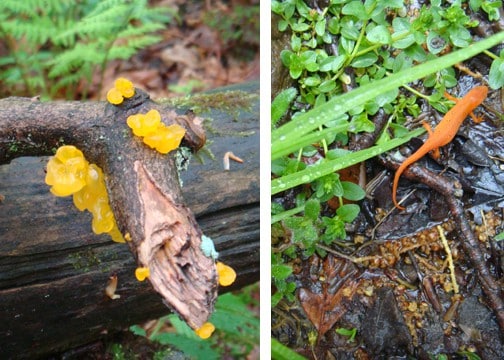 L: Unidentified orange slime. R: Orange friend (a happy newt).
L: Unidentified orange slime. R: Orange friend (a happy newt).
If you do find some morels, and don’t get side-tracked like I did on that particular outing, cut them open and remove any slugs or bugs. Saute in butter for at least 4 minutes—morels should NEVER be eaten raw—with a crack of salt and pepper. We also tried them stuffed with potatoes and sauteed ramps, as an accompaniment to poached eggs, and roasted with chicken. Dipped in egg batter, breadcrumbs, then fried and dipped in maple syrup (of course) is obviously to die for.
Happy walking and bon appetit!
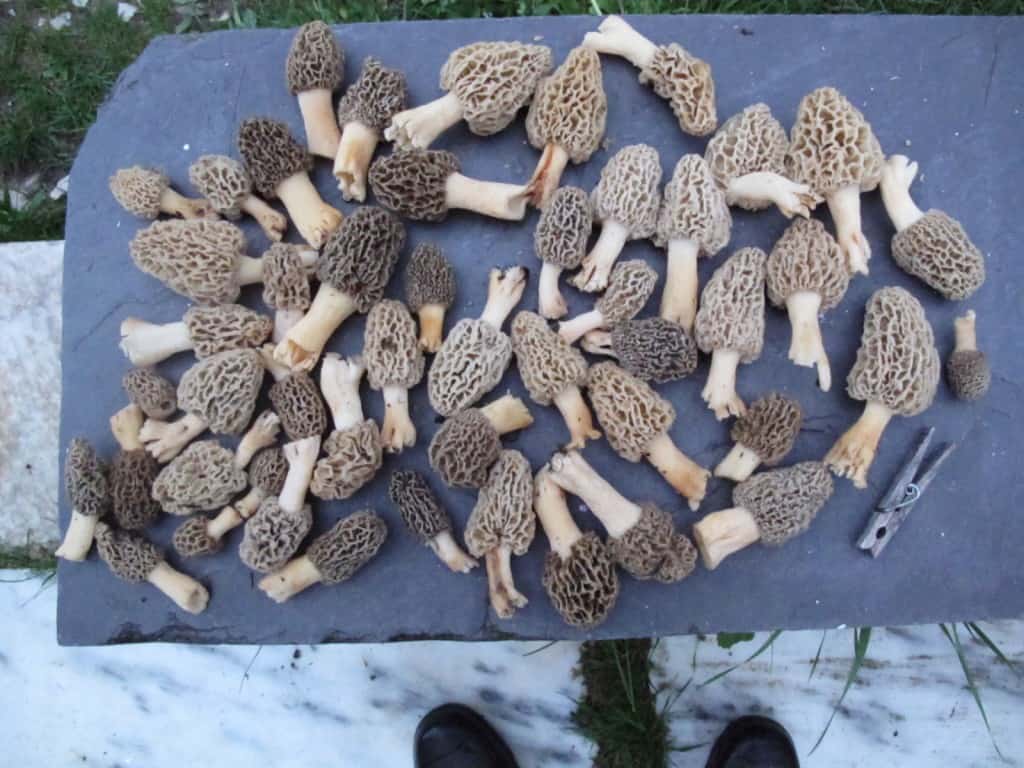 A good day.
A good day.






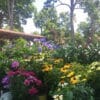
thanks for the the lovely and delicious walk in the woods.
I love this post. Thank you! I wish I knew where you went for a hike!
Anna, your pictures are lovely. I’m available to come to dinner at your house!